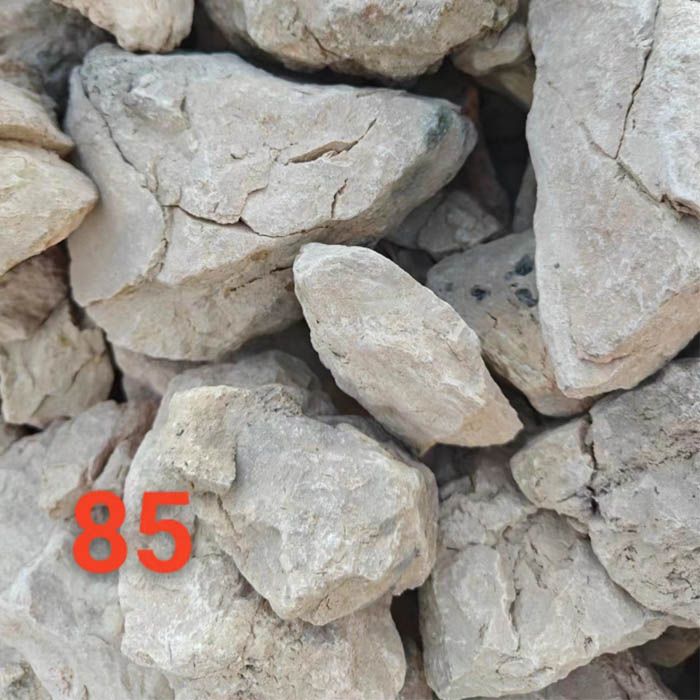Aug . 17, 2024 04:46 Back to list
Advanced Techniques in High-Quality Steel Production Using Basic Oxygen Furnaces
High-Quality Basic Oxygen Furnace Steelmaking
Basic Oxygen Furnace (BOF) steelmaking is a crucial process in the modern steel industry, recognized for its efficiency and ability to produce high-quality steel. This method involves converting molten iron, derived from iron ore, into steel by blowing oxygen through the molten metal. The BOF process represents a significant advancement over traditional methods, allowing for greater control over the chemical composition of the final product and significantly reducing impurities.
The Process
The BOF process initiates with the collection of liquid iron, typically from a blast furnace, which has a high carbon content. The basic oxygen furnace is charged with this molten iron, alongside steel scrap to optimize the materials. Once charged, high-purity oxygen is injected into the batch at supersonic speeds. The combustion of carbon and other elements in the molten iron generates high temperatures, exceeding 1,600 degrees Celsius. This heat facilitates the removal of unwanted components such as sulfur, phosphorus, and excess carbon, thus refining the iron into steel.
The reaction can be summarized as follows
- C + O2 → CO2 - FeO + C → Fe + CO
This process results in a significant temperature increase and the formation of gaseous by-products primarily consisting of carbon dioxide and monoxide, which are expelled from the furnace.
Advantages of BOF Steelmaking
One of the most appealing aspects of the BOF process is its efficiency. The ability to utilize scrap steel alongside molten iron allows for the recycling of materials, reducing waste and lowering the environmental impact associated with new steel production. Using a mix of scrap and molten iron can contain up to 30% of recycled materials, making steelmaking more sustainable and cost-effective.
high quality basic oxygen furnace steel making

Furthermore, the BOF process offers a superior quality of steel. The refined steel produced has the potential for enhanced mechanical properties and better surface quality than steel produced through other methods. This quality makes BOF steel highly desirable for various applications, from automotive manufacturing to construction and heavy machinery.
Technological Advances
Recent advancements in BOF technology have continued to enhance the efficiency and quality of steel production. Innovations in process controls, including automation and real-time monitoring, enable manufacturers to maintain optimal conditions within the furnace. This capability enhances the consistency of the steel produced, ensuring that it meets stringent industry standards.
Moreover, the development of low-emission technologies in BOF facilities has become increasingly critical for steelmakers aiming to reduce their carbon footprint. By capturing harmful emissions and utilizing different energy sources, such as electric arc furnaces (EAF), steel producers can significantly lower their greenhouse gas emissions while maintaining production efficiency.
Challenges and Future Directions
Despite its advantages, the BOF steelmaking process also faces challenges. The volatility of raw material prices, particularly iron ore and scrap steel, can impact production costs. Additionally, there are ongoing concerns about the environmental impact of conventional steel production methods.
Looking forward, the steel industry is keen on pursuing innovative solutions that align with global sustainability goals. Research into alternative methods of steelmaking, including hydrogen-based processes and increased use of renewable energy, shows promise for the future. Moreover, integrating more extensive recycling practices and embracing circular economy principles can lead to higher quality products while mitigating adverse environmental effects.
Conclusion
High-quality basic oxygen furnace steelmaking stands as a pillar of the contemporary steel industry due to its efficiency, quality, and capacity for integrating recycled materials. As technological advancements continue to evolve and the industry addresses environmental concerns, the BOF process is poised to maintain its relevance at the forefront of steel production, ensuring that it meets the needs of a growing world while fostering sustainable practices.
-
Traditional Recarburiser Suppliers High-Quality Manufacturer & Exporters
NewsMay.21,2025
-
Top Magnesium Silicate Adsorbent Manufacturer & Supplier Eco-Friendly Solutions
NewsMay.21,2025
-
Fe-C Alloy Manufacturers Premium Spherical Materials Supplier & Exporter
NewsMay.21,2025
-
High-Performance Carburiser Solutions Trusted Manufacturer & Supplier
NewsMay.20,2025
-
gs45c-1 Manufacturer High-Performance Industrial Equipment Solutions
NewsMay.20,2025
-
Ladle Covering Agent for Steel Protection & Slag Insulation Top Suppliers
NewsMay.20,2025
